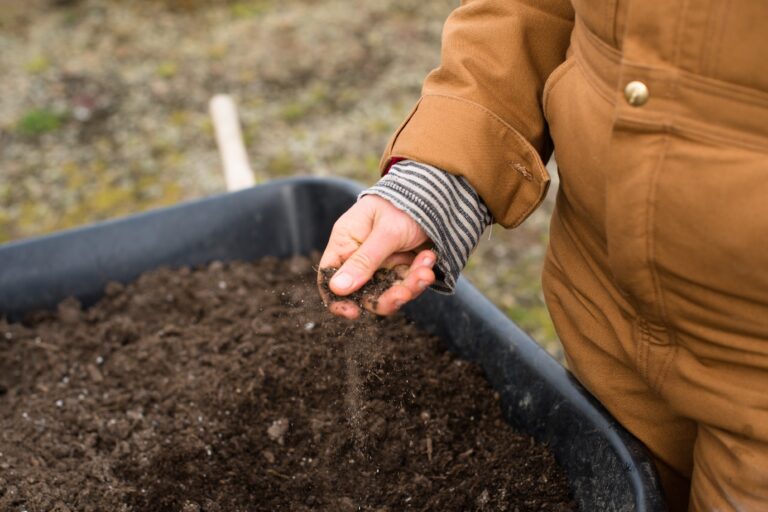Project Description
In light of growing agricultural intensification and environmental deterioration, managing agricultural waste and restoring soil quality are urgent global concerns. For soil structure and ecosystems to remain healthy for sustaining life on land, eco-friendly and affordable solutions must be sought. Soil fertility for example is often improved through composting of agricultural and household food waste and chemical fertilizers. In the former instance, the degradation of organic matter can be slow, often requiring chemical treatment, but the fate and long-term availability of these chemicals in the ecosystem remains poorly understood. Furthermore, the presence of contaminants such as recalcitrant pesticides, and microplastics also impact on soil biophysical properties such as structure, fertility, and quality, all of which impact agricultural production by affecting resource use efficiency and climate resilience of crops and livestock.
There is potential to harness microbiology to improve the processing of organic agricultural or food waste to produce valuable soil amendments. White rot and brown rot fungus (WRF and BRF), in particular Phanerochaete chrysosporiun, Trametes versicolor and Gloeophyllum sepiarium, show tremendous promise for the biodegradation of numerous organic contaminants and the improvement of soil fertility2,3. Well known for their lignin-degrading capabilities, WRF have the potential to break down complex organic compounds, including pesticides, and various recalcitrant pollutants and as such holds promise in bioremediation of contaminated environments. On the other hand, recent research has shown that BRF which primarily target cellulose4 have potential to modify soil structure and enhance nutrient availability as well as a capacity for mutualistic symbiotic partnerships with plants. Nonetheless, studies exploring the adaptation and targeted utilization of WRF and BRF for waste management and in contaminant removal is sparse.
The goal of this project, therefore, is to explore the combined potential of WRF and BRF for waste management, including for bioremediation of soils, and removal/reduction of contaminants such as chemicals and microplastics.
The student will aim to achieve this through the following objectives:
- Isolation and characterization of the enzymatic action of species of WRF and BRF in their biodegradation of organic matter in agricultural soils. The student will examine their role in compost production and assess the impact of any by-products of enzymatic degradation on soil ecosystems.
- Investigate the effects of WRF and BRW alone and in combination (co-cultures) on nutrient availability and cycling in soil amended with composts. Here, the student will assess nutrient release and impact on soil structure and quality and how this may influence their capacity to produce food.
- Evaluate the potential of WRF and BRF in soil contaminant removal especially in relation to pesticide and microplastics breakdown.
The project will employ a multidisciplinary approach including microbiology, soil science, biochemistry. The student will test if the mycofertilisation process can reduce the accumulation of organic waste in landfill and contribute to the development of compost for agriculture. An opportunity to explore the commercial potential of synergistic WRF/BRF for applications in agricultural waste management, and environmental restoration through QUB’s Lean Launch Programme may be available to the student.
CANDIDATE BACKGROUND
Candidates should have, or expect to achieve, a minimum of a 2.1 Honours degree (or equivalent) in microbiology, biochemistry or a relevant and related subject area. Applicants with a minimum of a 2.2 Honours degree may be considered providing they have substantial relevant experience in the project area.
Applications from candidates with a working knowledge or experience of basic laboratory good practice and some of the microbiological and analytical techniques especially in relation to work with filamentous fungi such as white and brown rot fungus species are particularly welcomed.
Candidates must demonstrate keenness for acquiring new skills and a willingness to learn and work as part of a team.
Photo by Zoe Schaeffer on Unsplash
Supervisors
Primary Supervisor: | Dr Linda Boniface Oyama, Queen’s University Belfast, School of Biological Sciences |
Paul HallettSecondary Supervisor: | Profile: Paul Hallett Email: paul.hallett@abdn.ac.uk Institution: University of Aberdeen Department/School: School of Biological Sciences |
Jason ChinAdditional Supervisor: | Profile: Jason Chin Email: j.chin@qub.ac.uk Institution: Queen's University, Belfast Department/School: School of Biological Sciences |
Geoff McMullanAdditional Supervisor: | Profile: Geoff McMullan Email: geoff.mcmullan@qub.ac.uk Institution: Queen's University, Belfast Department/School: School of Biological Sciences |
References
Babu, S., S. Singh Rathore, R. Singh, S. Kumar, V. K. Singh, S. K. Yadav, V. Yadav, R. Raj, D. Yadav, K. Shekhawat and O. Ali Wani (2022). “Exploring agricultural waste biomass for energy, food and feed production and pollution mitigation: A review.” Bioresource Technology 360: 127566.
Gao, D., L. Du, J. Yang, W. M. Wu and H. Liang (2010). “A critical review of the application of white rot fungus to environmental pollution control.” Crit Rev Biotechnol 30(1): 70-77.
White, N.A., Hallett, P.D., Feeney, D., Palfreyman, J.W. & Ritz, K. 2000. Changes to water repellence of soil caused by the growth of white-rot fungi: studies using a novel microcosm system. FEMS-Microbiology Letters, 184, 73-77
Goodell, B., Y. Zhu, S. Kim, K. Kafle, D. Eastwood, G. Daniel, J. Jellison, M. Yoshida, L. Groom, S. V. Pingali and H. O’Neill (2017). “Modification of the nanostructure of lignocellulose cell walls via a non-enzymatic lignocellulose deconstruction system in brown rot wood-decay fungi.” Biotechnol Biofuels 10: 179.
QUADRAT Themes
- earth-systems
- environmental-management






















































